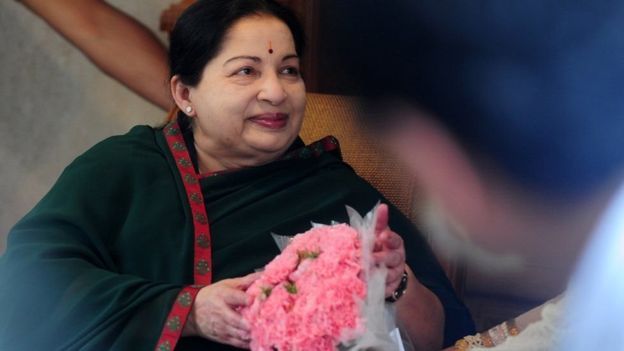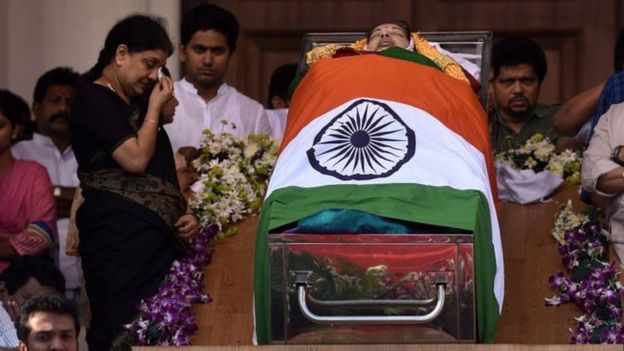After Chief Minister Jayalalitha's death, the treatment given to him was not correct and allegations that he had been given long-term drugs. Panneerselvam team and others were imposed. In this situation, the Government of Tamil Nadu released the detailed information on the treatment given to Jayalalithaa on March 6.
The night of September 22. There was an ambulance vehicle from Creams Road Apollo Hospital, where the phone call from the home of the Chief Minister's home, Boise Gardens.
A team of doctors went along. When he went to the Boise Garden home, the Chief Minister Jayalalithaa was unconscious. He did not respond to anyone who spoke. Immediately he was taken to ambulance and brought to hospital for 10.25.
He was breathing as he was brought to the hospital. Blood pressure was 140/100 and blood sugar was 560. Water was lung in the lungs. The amount of heart rate was high. He was transferred to the Multi Discipline Critical Care Unit, MDCCU from the Emergency Care Unit due to his illness. Drugs for antibiotics, antibiotics, drugs for ease of breathing, and insulin were provided.
Drugs were given to some other infections found in his body. On the second day her health began to improve. Jayalalithaa spoke with family and government officials for a while.
He has already had uncontrolled diabetes, high body weight, blood pressure, thyroid and bronchitis. He was given steroid medicines for dermatitis. Prior to being hospitalized, he suffered from fever.
Increased breathing
In the following tests, his body was diagnosed with infection. He was given anti-infectious drugs to reduce it.
On the fourth day in the ICU, he suffocated breathlessness. There were also problems in the heart. But doctors decided that immediate heart surgery was not necessary.
Drugs and treatments continued. Apollo Hospital reported on the fifth day that he had spoken to government officials on September 27.
Jayalalithaa was breathing and was going to end. On 28th the situation worsened. After approving those involved, he was taken to anesthesia through drugs.
Heart problems and lung problems continued. The amount of the drug delivered to the infection was reduced only. His breathing problem was further deteriorated on 30th. Water supply in the lungs does not decrease.
Specialist from Britain
Richard Peal, an intensive care physician from Britain, brought advice and advice. The government officials and family were told that Jayalalithaa would be in the hospital for a long time. At that moment he was estimated to have 40 percent chance of his death. His health improved in the next two days. No new infection has come. The fever is low. Infected with blood and urine. The pipes on the body were removed.
But the ventilator was not successful in trying to reduce support. On October 5, the doctors from Delhi AIIMS met with Apollo doctors.
In the meantime, Jayalalithaa's heart beat was suddenly reduced and decreased. Prior to this, he was found to be in a cold or hot environment. He would have to be with the help of a ventilator, and on October 7 he was taken to the 'Dragiostami' and was pumped up.
But water in his lungs did not stop. After treatment, attempts were made to reduce ventilator support. He slowly remembered him. He was able to communicate with others. He had a small amount of water and juice.
'Sleeping is not a big problem'
He was found to be the cause of the problem in the heart of the lungs that followed the lungs. The advice of Dr. Stewart Russell of the John Hopkins Hospital in the US and Dr. Jayan Parameshwar of Britain's Babward Hospital was obtained by the family because the family insisted that they should consult with cardiologist outside the hospital.
It was a great problem for him not to sleep at night during this period. At the same time, he was constantly transmitting information to doctors and nurses by signaling and lip service. He started exercising. He started eating foods.
Over the course of the next few days, the drugs were regularly handled, and the medication was continuously reduced, and slowly reduced ventilator support. Night was given to sleep. Since he continued to eat orally, he did not have protein, The supply of protein through the pipeline was initiated on the 1st of November.
Besiotherapy experts from Apollo were also treated and treated by Singapore physician from Singapore. Sitting on the bed tip, and boating in a wheelchair was encouraged. The pipe called t-pies is applied to breathe. Slowly cutting the veleliter was removed.
On the 13th of November, all the tubs were removed from the body. The size of the tracheostomy tube is reduced. Jayalalithaa was encouraged to speak on November 14. With the help of some tools, he could speak.
This was followed by night only, from 11 pm to 6am. He breathed automatically at other times. On November 19, he was transferred from the ICC to the ordinary special ward. It was difficult for him to speak with the tricyrostomy tube, the size of the pipe was further reduced.
But sudden sudden increase in blood pressure, the problems in the heart continued.
His potassium level came to normal on December 4. Although it is necessary to treat him as an alcoholic, he does not have to do it immediately; The doctors decided that they would be able to do the next day and told Jayalalitha and relatives.
The doctors told Jayalalithaa that she should be enthusiastic about exercising and she should take the mouth out of the mouth. But on December 4, she was coughing up. It was found that the pneumonia may have been experimented with the new one. The amount of oxygen given to him was increased. Jayalalitha vomited breakfast.
Evening 4.20. Jayalalitha was watching TV watching around nurses, doctors and relatives. Suddenly breathing said he was too busy. Immediately a ventilator was implanted. Soon the heart rate started to decline. At one stage, the lack of pulse was found, the efforts to revive the heart began.
After half an hour there was no improvement, and his last attempt was to have an eMM tool. But blood white blood began to decline and blood began to flow. He was taken to the ICC room and was undergoing intensive treatment.
On December 5, Dr. Gilani from the AIIMS hospital came to the hospital and examined Jayalalithaa. Jayalalithaa's neurological examination revealed that the brain stem began to fail. With no improvement in the heart rate, Jayalalithaa continued with the help of an ecom.
On the fifth day, at 10 pm, there was no improvement in the condition of his heart. The doctors realized that he would no longer recover from it.
Approval to remove the EMM tool
Chief Secretary Ram Mohan Rao, who was the elder brother of O. Panneerselvam, Health Minister Vijayapaskar, Health Secretary Dr. Radhakrishnan, Jayalalitha's friend Sasikala and Parliament Deputy Assistant Secretary Thambidurai.
Everyone authorized the removal tool. Jayalalithaa was declared dead at around 11.30 PM, to be withdrawn.
Chief Minister Jayalalithaa, who was admitted to the hospital on September 22, died at midnight on December 5, without treatment from a 75-day hospital.
On September 22, when she was in his home, the Tamil Nadu government explained that she had suffered a health problem and nothing shocked.



Comments
Post a Comment